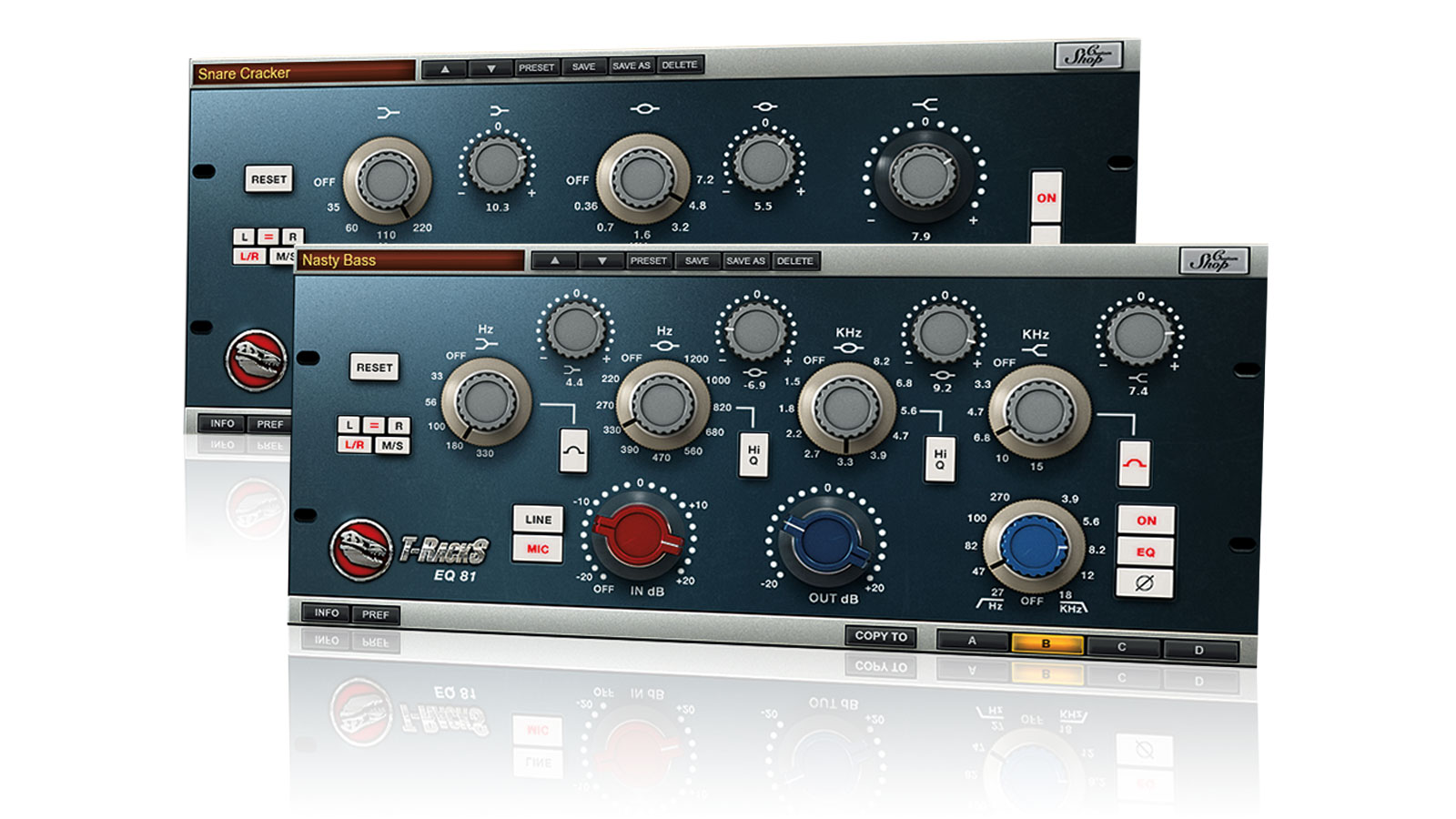MusicRadar Verdict
An excellent Neve EQ and preamp emulation, with its own sound. The EQ81 is also worth owning if you can stretch to it.
Pros
- +
Mic and line preamp modelling. Separate gain and frequency knobs. Flexible channel processing with M/S Useful preamp saturation. Sonically distinctive. Four memory locations.
Cons
- -
Inherently limited in scope.
MusicRadar's got your back
The latest addition to IK's now-well-stocked Custom Shop plugin effects store is based on a classic Neve input/EQ stage: the 1073.
The Custom Shop interface enables you to buy and authorise EQ 73 without leaving your DAW, where it can be loaded as an individual plugin (VST/AU/RTAS/AAX) or in the useful T-RackS 'shell' (VST/AU/RTAS/ AAX/Standalone).
"IK has gone to town, with full component modelling of all gain stages, including the preamp and its saturation properties"
Stereo instances support independent and linked channel operation in both L/R and M/S (mid/side) formats, and the plugin also includes a handful of presets, four quick recall memory locations and two latency settings - 'oversampling' and 'lowest latency' (1284 and 132 samples respectively).
This particular Neve EQ can already be found in many plugin emulations, and the specifics of its design are well-documented. However, beyond the basic EQ spec - three bands plus high-pass filter - IK has gone to town emulating other parts of the circuit. This means full component modelling of all gain stages, including the preamp and its saturation properties. In theory, then, this should get us very close to the sound of the real thing.
Make some noise
Starting with the GUI, IK has separated the gain and frequency selector controls (they're dual concentric on the hardware), and opted for Mic/ Line switches rather than a dual control knob, enabling slightly quicker A/B-ing of the two input paths.
Routed through a frequency analyser, the plugin exhibits greater third-harmonic distortion when pushed hard in Mic mode - adding a bit of presence, just as you'd get with the real thing.
In Line mode, it's less coloured. We also note some very low frequency (30Hz) artifacts on EQ 73 (presumably to do with modelled noise floor, hum, etc). Another subtle behaviour concerns levels.
Engaging the high-pass filter on EQ 73 causes a small drop in level, and there's a small level increase when switching to Mic input with either model.
Also available is EQ 81 - based on another Neve classic stage, the 1081 - which we found can work wonders with 'broad brushstroke' changes or - at high Q settings - be far more pokey and aggressive than the '73. We particularly like EQ 81 on acoustic guitar, vocals and piano, whereas the '73 excels at transforming snares and kicks, and adding a bit of grit to basses.
If our budget was tight and we could only choose one of these excellent EQ plugins, it would probably be EQ 73, as it's slightly more coloured and interesting. The two are certainly different enough to justify having both in your arsenal should funds allow, though.
Computer Music magazine is the world’s best selling publication dedicated solely to making great music with your Mac or PC computer. Each issue it brings its lucky readers the best in cutting-edge tutorials, need-to-know, expert software reviews and even all the tools you actually need to make great music today, courtesy of our legendary CM Plugin Suite.
“Without investment in music education our talent pipeline is at risk of drying up along with the huge opportunities for economic growth it brings”: UK Music draws up five point plan to “turbocharge” music education
“How daring to have a long intro before he’s even singing. It’s like psychedelic Mozart”: With The Rose Of Laura Nyro, Elton John and Brandi Carlile are paying tribute to both a 'forgotten' songwriter and the lost art of the long song intro
“The verse tricks you into thinking that it’s in a certain key and has this ‘simplistic’ musical language, but then it flips”: Charli XCX’s Brat collaborator Jon Shave on how they created Sympathy Is A Knife











